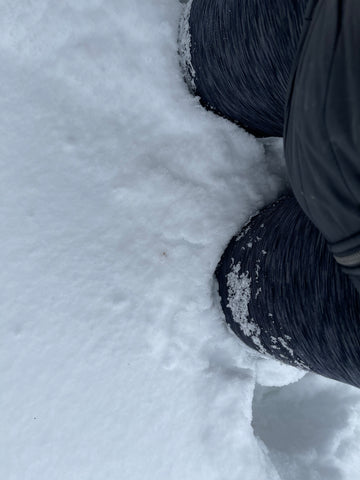
Snow and photography
 Porcupine crosses through the snow
Porcupine crosses through the snow
This year in Northern Alberta has been a very tough year for snow. We are already into March and it just keeps snowing. There are places in fields where the snow is waist-deep. Snowbanks are easily 5 feet high in some areas. Just even driving to some of the locations I usually photograph at let alone walking once I get there has been a continual challenge.

Me in thigh-deep snow while photographing a great gray owl
 The great gray owl in the snow
The great gray owl in the snow
There are lots of challenges photographing in winter. First, most cameras do not like the cold. Batteries drain quickly, you get soft photos if you are shooting with a lens hood on, yet if it is snowing you want a lens hood on, the white of the snow tends to cause your camera to underexpose and trek through the snow with all your gear and many layers on is hard work, plus there is nowhere to rest your camera in the process.

Fox emerging from its den
Let's examine each of those in a bit more detail, Cameras like cars are generally not built for being outside in close to -40C weather nor do they like a lot of moisture, cold temperatures and snow are tough on cameras. It is one of the reasons I still have all my Pentax cameras as they have unbelievable weather sealing and of any make of camera I have tried, work the best in cold weather. However, the sharpness of the Pentax K1ii is subpar when compared to the Canon R5. If you are going to photograph in cold temperatures make sure you take a lot of extra batteries and keep them close to your body in an inside pocket to keep them as warm as possible, cold drains batteries quickly that is a well-known fact.
I only recently learned about the heat effect when shooting with a lens hood on in cold weather and once it was explained to me it totally made sense! There are is a phenomenal video on this by Steve Perry. Worth the watch if you live in cold climates like me.
Finally, I want to talk about photographing animals in the snow. If you are using a mirrorless camera you need to be watching the histogram and adjusting your settings so that your histogram is pushed a little to the right. This slight overexposure helps reduce noise in your images and you can make slight adjustments to exposure in Lightroom afterward. If you are really underexposed and try to bring up the exposure in a software program you will introduce a lot of noise in your image. So better to be slightly overexposed just in general in any conditions. If you have a DSLR camera it is going to use the snow if there is a lot of it in the picture to set the White Balance. It will underexpose your images every time as it decides the white is grey. To compensate for this you want to bump your EV up close to +2 so your images are not underexposed. I would suggest taking a few at +1 1/3 + 1 2/3 and +2 and see which you like the best. With a DSLR you cannot really tell in the viewfinder as what you see in the viewfinder will not be exactly the image you will get, so you need to look at your images on your computer. With a mirrorless camera, you can see in the viewfinder exactly what your final image will be.

 Snowshoe hare on a snowbank
Snowshoe hare on a snowbank